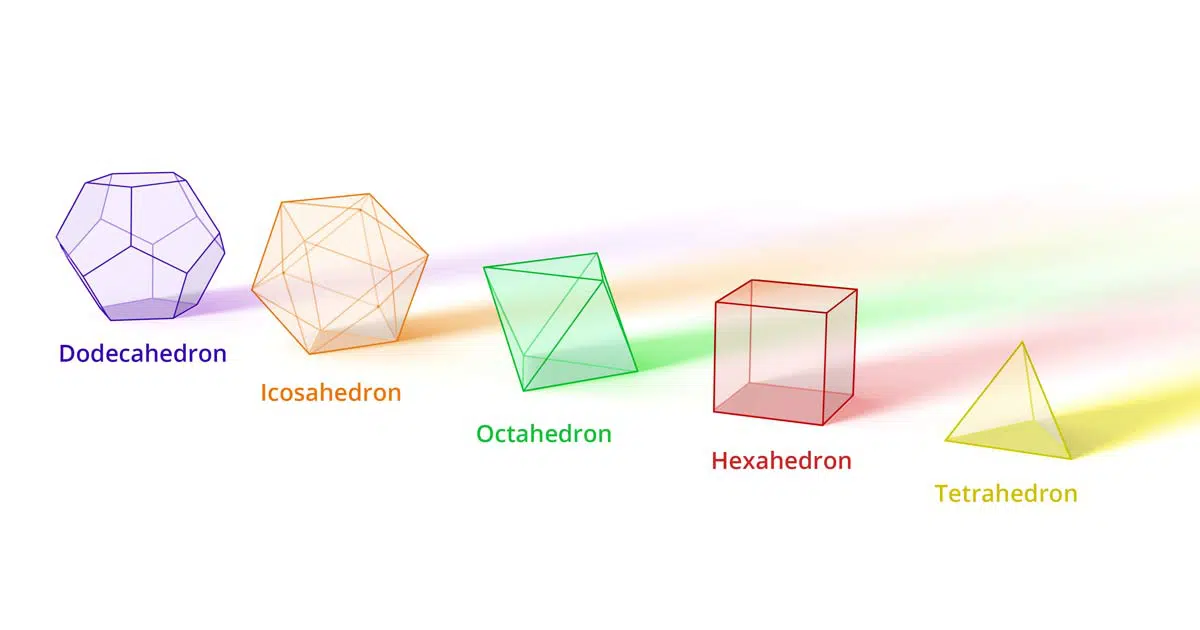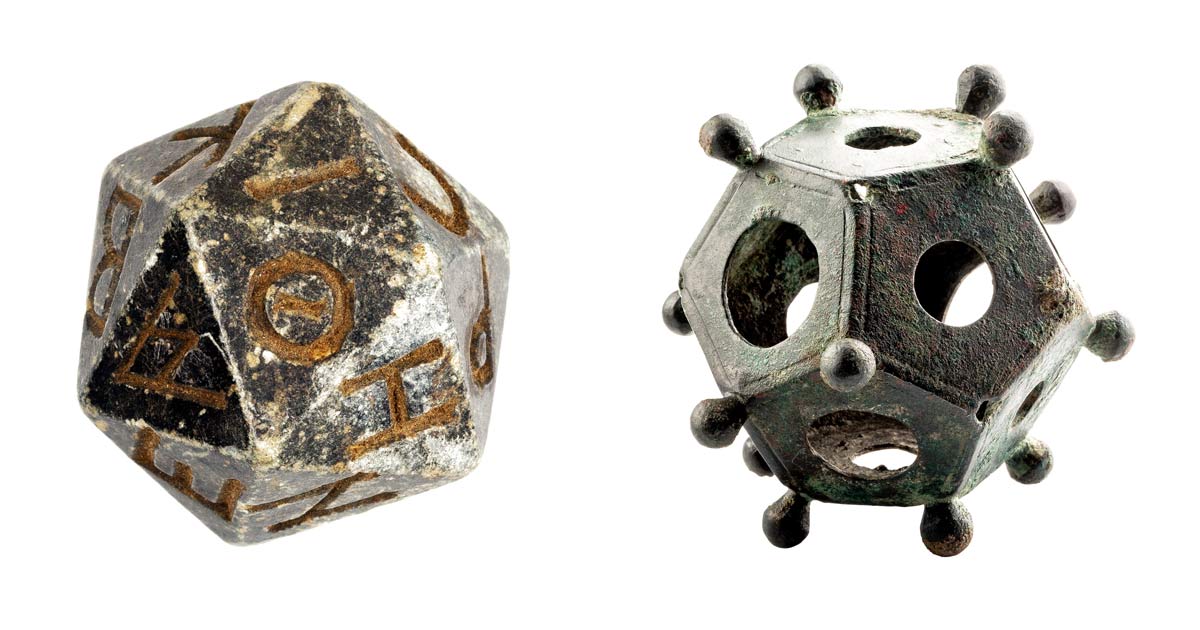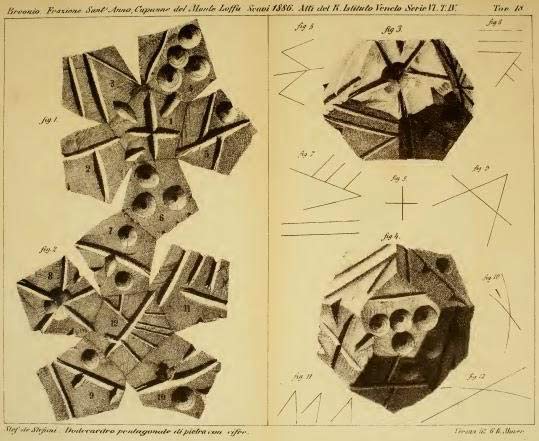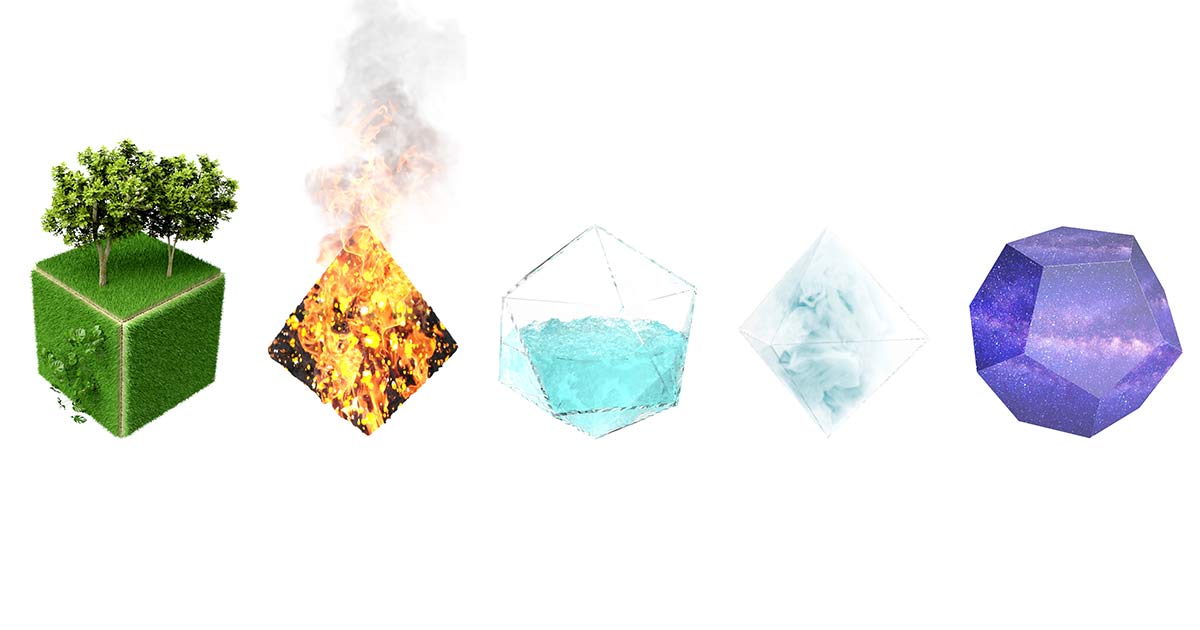
Understand that the largest platonic solid can be assembled from 620 tetrahedra each of which nicely represent the binary SPACE TIME Pendulum. Now we have two such objects then able to become neutral electron pairs. Again 620 of these will form up a Neutron also a platonic solid. Two of those are our neutral neutron pairs. The act of Creation will bias toward binaries to minimize effort.
The bottom line is that it all entails the packing of tetra hedra, top to bottom in the form of platonic solids which if perfect are almost neutral. Thus i think that our universe or galaxy at least is packed with a first tier of SPACE TIME Pendulla geometrically describing tetra hedra. Maximal assembly using such object pairs produces our Neutral Electron Pairs. (NEP). Then again maximal assembly gives us NNPs or Neutral Neutron Pairs.
That is the best we can do because otherwise tetra hedra will not pack perfectly to create anything larger. That we get with decay products which is our existence. The packing problem is truly interesting, not least because it should not be true and somehow i think Pi got in the way. no one has proved that.
All this describes the neutral nature of so called DARK MATTER.
I have now come to understand that it is all about us and scaled smaller than a neutron itself and it flows through our own matter simply because it is not really sticky. .
The Secrets of the Platonic Solids and Sacred Geometry
By Sebastiaan Fiolet on 19/06/2020
https://www.sacredgeometryshop.com/sacred-geometry/the-secrets-of-the-platonic-solids/
You might have heard of them before, the Platonic Solids. Mysterious shapes which every Sacred Geometer talks about. We even shortly mentioned them in our first Sacred Geometry blog.
But what are they really? What kind of secrets do they hold?
In this multi-part blog we’ll unfold the secrets of the Platonic Solids.
Let’s dive in!
Click to quickly jump to a section:What are Platonic SolidsPlatonic Solid Duals
What are Platonic Solids?
In the world of math, the Platonic Solids go by the name “Convex Regular Polyhedra”.
Polyhedra is a Greek word, meaning “Many Faces”. So, in short, in our 3-dimensional reality, only 5 forms can be constructed with the following rules: each face, edge and vertex and angles between each face are identical.
So why are there exactly 5 platonic solids? Why not less.. Or more?
To explain this, we’ll have to take a look at a dimension lower, 2D instead of 3D.
Every Platonic Solid (and Archimedean Solid) is built out of regular polygons. This basically means that each edge is equal and each corner of the 2D shape is equal. The most basic regular polygon is a regular triangle. Add a corner more and you get a square, add another corner more and you get a pentagon. This can go on to infinity.
Doing so, will eventually result in a circle. So a circle can also be seen as an infinite polygon.

All of the Platonic Solids are made of one of these polygons. Mainly the equilateral triangle, the square and the pentagon.
Fun fact: All these regular polygons contain the Magic Number 9. You can read more about this in this blog.
Folding the Platonic Solids
So let’s take the triangle. If we add 3 other triangles and stitch them together on each edge of that single triangle, you get a bigger flat triangle. But if you fold them on those stitched edges, out of the 2D dimension into the 3D dimension, you’ll create an enclosed volume called the Tetrahedron.

So basically, it’s origami, but with a few extra rules.
A more clear example is the cube, which is very familiar for most people.

As you might understand, adding a few extra flat squares to the 2D flat pattern, or removing a few, won’t make it an enclosed volume any more. This rule basically applies to all the Platonic Solids.
Let’s take another look at the triangles. With 4 triangles you can make the Tetrahedron, add 4 more triangles and you can make the Octahedron, add 12 more triangles and you can make the Icosahedron. That’s basically all you can make or “fold” with the equilateral triangle, else it won’t be an enclosed volume anymore.
With 12 pentagons you can fold it to the Dodecahedron. No other configurations are possible with this polygon, just like the square which forms a cube (hexahedron).
But what about the hexagon, can’t we make a solid from that? Nope.
As a flat pattern all the “non folding” lines are already touching each other. You can’t pop them out of 2D into 3D. Even if you did, the surfaces would intersect.

The Mathematical explanation would be: At least 3 faces have to meet at each vertex and the sum of the internal angles that meet at a vertex must be less than 360 degrees.
So for this reason, it’s only possible to create 5 Platonic Solids.
The Tetrahedron (4 faces, yellow), the Hexahedron / Cube (6 faces, red), the Octahedron (8 faces, green), the Dodecahedron (12 faces, purple) and the Icosahedron (20 faces, orange).
Each Platonic Solid is named after the amount of faces they have.

Duals
There is even something more magical about these objects; each of them has a dual.
So what does this mean? Every polyhedron has a dual polyhedron with its faces and vertices interchanged.
To explain this more easily, if we placed a dot (or vertex) in the middle of each face of one of the Platonic Solids and we would connect these dots with lines, a new Platonic Solid emerges!
Take the Cube for example, its dual is the Octahedron. The cube has 6 faces and 8 vertices, while the Octahedron has 8 faces and 6 vertices. The dual of the Octahedron is the Cube.

This way the Icosahedron and the Dodecahedron are duals of each other. The Tetrahedron however, is self dual. This means another Tetrahedron can be made inside the Tetrahedron.
Nesting those duals inside each other can go on to infinity in both directions, smaller and larger. You can basically create a Platonic Solid Fractal this way.
Who discovered the Platonic Solids?
So who discovered the Platonic Solids? The Platonic Solids are ancient and are found in excavations, dating hundreds of years back. Such as these Ancient Roman and Egyptian excavations (200 – 400 AD). They were using the Dodecahedron and the Icosahedron, probably as dice. Their real purpose still remains a mystery.

However, it turns out that the Etruscan civilization did have knowledge of the Platonic Solids. During the excavations on Monte Loffa, near Padua (Italy) they found man-made Dodecahedrons which were most likely used as a toy or in games. These dodecahedrons are approximately 2500 years old, dating from 500 BC.

Plato
But it was the Ancient Athenian philosopher Plato (347 BC) who considered these shapes as extremely important. It was he, who described these unique shapes for the very first time and gave the name “The Platonic Solids”. Rumors go that it was Pythagoras who used the Platonic Solids 200 years earlier than Plato, he named these shapes “The Perfect Solids”.
Plato believed they’re the most basic building blocks of our physical reality. He mentioned that without Fire, nothing would be visible and without Earth nothing would be tangible.
For this reason he connected each platonic solid to the basic elements, or to each state of matter (solid, liquid, gas, plasma).
He began with the Cube, which has a very stable base and is the most immovable of all platonic solids. So it corresponds to the stable EARTH or solid matter.
The Tetrahedron has the smallest volume for its surface area and therefore it is the most movable of all the platonic solids. So it corresponds to the movable FIRE, or plasma.
The Icosahedron has the largest volume for its surface area and is therefore the least movable. Besides, it’s the most round looking Platonic Solid, like a droplet of water. So WATER, or liquid, is assigned to the Icosahedron. Also, in relation with the Tetrahedron, it shows the properties of dryness (fire & small) and wetness (water & big).
The Octahedron can rotate freely when held by its two opposite vertices. Its volume is between the Tetrahedron and the Icosahedron. It’s therefore mobile and movable. So it corresponds to the movable AIR, or gas.
Last but not least, the Dodecahedron. The dodecahedron corresponds to the UNIVERSE, or Aether, because the zodiac has 12 signs (the constellations of stars), corresponding to the 12 faces of the dodecahedron.
More coincidentally, researchers suggested in 2003 that the finite Universe has the shape of a Dodecahedron!

Kepler
These links that Plato made between the elements and the Platonic Solids has inspired many cultures and other mathematicians. Mainly Johannes Kepler (1571 – 1630) got inspired by the ideas of Plato. He used the Platonic Solids to describe the planetary movements, also known as the Mysterium Cosmographicum.
He nested each Platonic Solid inside each other and also encased each of them inside a sphere. Kepler discovered that the spheres could be placed at intervals corresponding to the relative sizes of each planet’s path. With the assumption that the planets circle the Sun.
So therefore, he assigned the Cube to Saturn, the Tetrahedron to Jupiter, the Dodecahedron to Mars, the Icosahedron to Venus, and the Octahedron to Mercury.
Neptune, Uranus and Pluto were discovered after Kepler’s death.
The Mysterium Cosmographicum of Kepler can be seen as the first important step towards our current/modern model of our Solar System.
Metatron’s Cube and the Platonic Solids
Another amazing thing about the Platonic Solids is Metatron’s Cube.
Metatron Cube or Metatron’s Cube is a complex sacred geometric object, created through the Flower of Life. The Flower of Life is often seen as the source of everything, and you’ll soon probably understand why.
The Flower of Life is a complex shape with many lines (in 2D). If we remove certain lines, we can create new shapes. This way we can go from the Flower of Life, to the Fruit of Life. If we now add some straight lines, we can go from the Fruit of Life to Metatron’s Cube.

Now comes the interesting part, from the Metatron’s Cube we can create the Platonic Solids. But the Platonic Solids are a 2D projection. Sounds complex, I know. But below you’ll see how this works.

Metatron’s Cube is named after the archangel Metatron. He is responsible for all the creations and makes his appearance in Judaism, Christianity and the Islam.
The name Metatron comes from the Greek words Meta and Tron. In Greek, Meta means “Beyond” and Tron means “Matrix”.
In Ancient Egypt, Metatron is also known as the God of writing, magic, wisdom, and the moon. But goes by the name Thoth.
It’s no coincidence that Metatron is responsible for all the creations and that Metatron’s Cube contains all the Platonic Solids. Especially since the Platonic Solids are seen as the building blocks of our Universe.
Platonic Solids as Building blocks
Just like Plato said, the Platonic Solids are the building blocks of our Physical Reality. And there is proof for that statement as well! In a different way than Plato meant, but he was not far from the truth.
The amazing thing is, these building blocks apply on almost every scale, from the microcosm up to the macrocosm.
Just like Thoth once said: “As Above, So Below”.
We’ll take you on a journey from small to big in another blog and show you how the Platonic Solids act as building blocks in our physical reality.
It might sound strange that they really are the basic building blocks of our physical reality. But it’s not that strange really, since they’re extremely balanced and equal. And we all know that nature tends to balance things out equally. A good example of nature balancing surface tension with the help of the Platonic Solids can be seen in this video:
Spiritual meaning of the Platonic Solids
Since Sacred Geometry has a positive energetic effect on us, so do the Platonic Solids. Each and every Platonic Solid can assist you in a different way on your spiritual path, but they all have one thing in common. They’re the most primitive, stable and balanced shapes in the Universe. For this reason, they will mostly balance energies in your system and the environment.
In another blog we’ll go in depth about the Spiritual meaning of the Platonic Solids.
We’ll cover their connections with the Chakras, how they can help you on your spiritual path and how you can use them to your advantage.

Conclusion
In this blog you have learned what the Platonic Solids are, why there are 5 of them, what their duals are and their history through time.
There is still plenty more to tell, especially about the art through time. Many paintings were inspired by these magical shapes.
If you’ve read the other Platonic Solid Blogs (Building blocks and Spiritual Meaning), you’ll now have the full picture of why they’re so important. These shapes govern our entire physical reality and have a great effect on our well being. These shapes hold the key to our Universe.
No comments:
Post a Comment